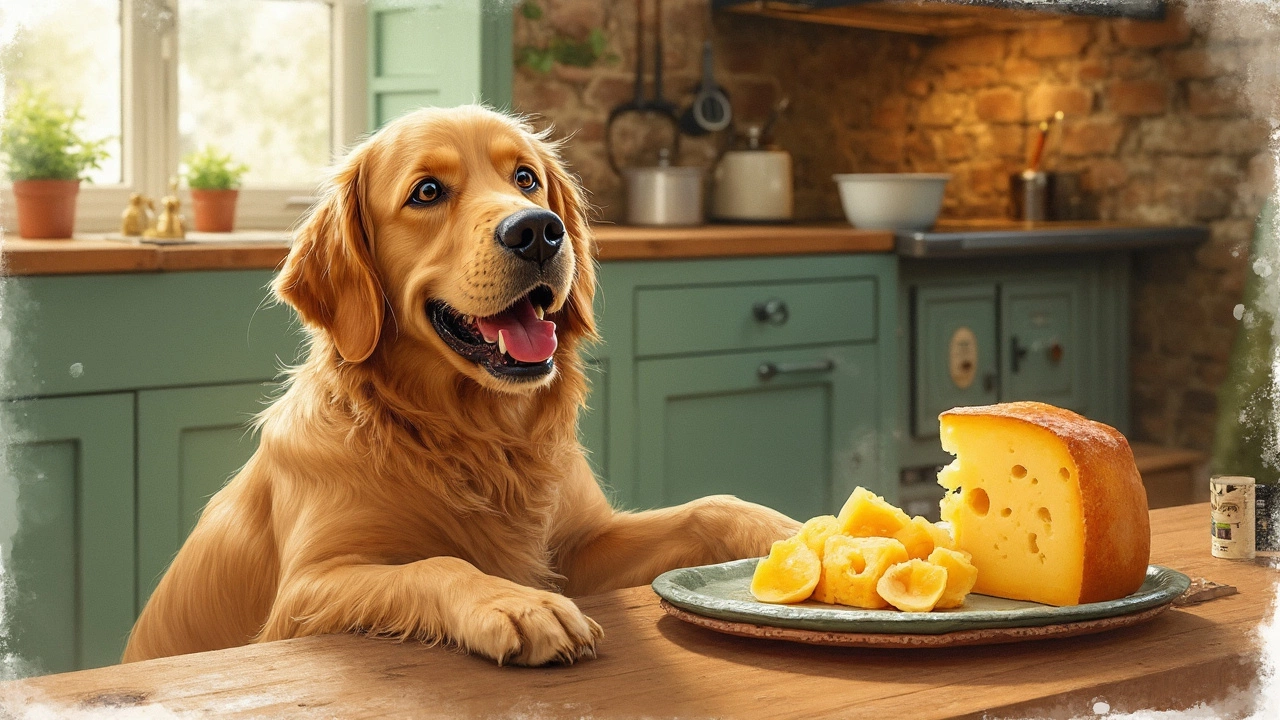Cheese for Dogs – Is It Safe and How to Serve It Right?
Got a cheesy craving and wonder if your pup can join in? You’re not alone. Many owners love sharing a little cheese as a treat, but not every cheese fits a dog’s diet. Below we break down the safety facts, the best varieties, and easy ways to make cheese a healthy bonus for your canine.
Is Cheese Safe for Dogs?
Short answer: Yes, most dogs can eat cheese in moderation. Cheese is high in protein, calcium, and fat, which can be a quick source of energy. The catch? Too much fat can cause tummy upset or weight gain, and some cheeses carry extra risks.
Lactose is the main concern. Adult dogs often produce less lactase, the enzyme that digests lactose, so large portions of soft cheeses can lead to diarrhea or gas. Stick to low‑lactose options and keep servings small – think a bite‑size cube or a thin slice.
Another red flag is added ingredients. Skip any cheese that contains garlic, onion, herbs, or artificial sweeteners like xylitol, as those are toxic to dogs. Always read the label and choose plain, unflavored cheese.
Best Cheeses and How to Serve Them
Here are the top picks that most dogs handle well:
- Cheddar (mild) – Firm and low‑lactose. Cut into tiny cubes for a training treat.
- Swiss – Small holes mean less fat per bite. Great for stuffing inside a chew toy.
- Mozzarella (part‑skim) – Soft, mild, and easy to shred over kibble for extra protein.
- Cottage cheese – Very low in lactose and high in moisture. Mix a spoonful into wet food for picky eaters.
- Goat cheese – Naturally lower in lactose than cow’s milk. Offer a thin slice if your dog tolerates it.
When you’re serving cheese, follow the 1‑inch rule: no piece larger than a thumb tip for a medium‑sized dog. This keeps calories in check and reduces the chance of choking.
Got a dog that loves training snacks? Freeze small cheese cubes on a tray and pull them out one by one. The cold texture can also soothe sore gums after a dental check‑up.
Remember to factor cheese calories into your dog’s daily count. A typical 1‑ounce cheddar cube packs about 110 calories, which is roughly the same as a handful of kibble. If your pup is on a weight‑watch plan, treat cheese as a substitute for higher‑calorie biscuits.
Finally, watch for any signs of intolerance: bloating, loose stools, or excessive gas. If you notice these, cut cheese out for a few days and reintroduce slowly, or consult your vet.
Bottom line: cheese can be a tasty, protein‑rich reward when you pick the right type, keep portions tiny, and stay clear of harmful additives. Your dog will love the flavor, and you’ll keep the health risks low. Happy snacking!

Is Cheese Safe and Healthy for Dogs?
Cheese, a popular human treat, can be a tasty snack for your dog but should be given with care. It's high in fat and calories, so moderation is key to avoid weight gain or digestive issues. On the plus side, cheese can be an excellent source of protein and calcium for dogs. Learn important facts, potential risks, and helpful tips about including cheese in your dog's diet.
View more